Hủ Tiếu Nam Vang: Basic Information
Pronunciation
Alternative Name(s)
Dish Type
Course
Mealtime
Popular Hủ Tiếu Nam Vang Variations
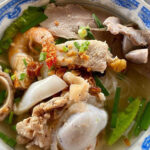
Hủ Tiếu Mỹ Tho
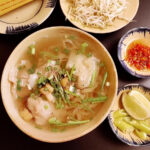
Hủ Tiếu Trung Hoa
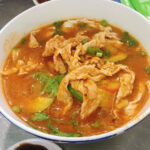
Hủ Tiếu Sa Tế Nai
Hủ Tiếu Nam Vang: Ingredients and Preparation
Main Ingredients
Main Cooking Method
Preparation Process
Hủ Tiếu Nam Vang: A Deep Dive
Cultural Significance
Taste
Texture
Aroma
Color
Serving Style
Serving Temperature
Accompaniment
Occasions
Seasons
Special Diets
Calories
Popularity
Popular Similar Dishes
- Kway Teow
- Kyay Oh
Popular Dining Area
Hủ tiếu Nam Vang is a popular version of hủ tiếu in Vietnam made by combining chewy rice noodles with a broth filled with minced pork and various toppings.
Interestingly, the Khmer people were responsible for creating this noodle soup dish, originally calling it kuay tiev.
Then, the dish gradually made its way into a part of traditional Vietnamese cuisine using pork bone broth as a base.
As for the toppings, Vietnamese often swap out the pig intestine with shrimp, crab, fish, squid, or other meaty options.
As a street food specialty, locals often feature shredded dried squid, daikon, and carrots to intensify the sweetness. Interestingly, hủ tiếu Nam Vang is also available in either dry or broth versions.
Once you’ve got the hang of hủ tiếu Nam Vang, dive into a few of its variants across Vietnam and locations that sell this lovely noodle soup.
Then, focus on the positive and negative features of eating this noodle dish. Also, you should have a peek at some of the common concerns about the hủ tiếu Nam Vang and specialties that are like it.
Key Points
Hủ Tiếu Nam Vang Images
What Are the Different Versions of Hủ Tiếu Nam Vang?
Here are a couple of adaptations of hủ tiếu Nam Vang found in Vietnam that you need to know:

Hủ Tiếu Mỹ Tho
Originates from My Tho city, typically features both seafood and pork
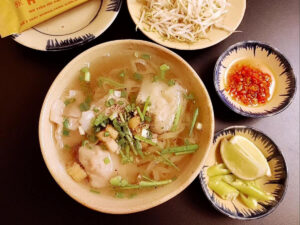
Hủ Tiếu Trung Hoa
Chinese-style hủ tiếu, often using wider rice noodles known as shahe fenPossesses a stronger soy sauce profile
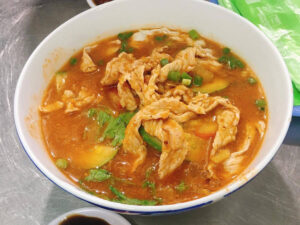
Hủ Tiếu Sa Tế Nai
A version that has a spicier flavor with a thick and yellow or orange broth while the hủ tiếu noodles are flattened, similar to phở
Make sure to check out all the benefits and drawbacks of eating hủ tiếu nam vang that you should know to make the right choice for your next meal.
Where to Eat Hủ Tiếu Nam Vang in Vietnam?
When in Vietnam, these are the locations to drop by and get yourself a nice of hủ tiếu Nam Vang:
In Ho Chi Minh City:
Hủ tiếu Nam Vang Đạt Thành
Address: 232 Nguyen Thi Thap, Binh Thuan ward, District 7, HCMC
Opening time: 7 AM to 11 PM
Quán hủ tiếu Quốc Ký
Address: 24 Ky Con, Nguyen Thai Binh ward, District 1, HCMC
Opening time: 6 AM to 11 PM
Hủ tiếu Nam Vang Nhân Quán
Address: 122D Cach mang thang 8, Ward 7, District 3, HCMC
Opening time: 5 AM to 11 PM
In Hanoi:
Address: 67 Tue Tinh, Nguyen Du, Hoan Kiem District, Hanoi
Opening time: 9 AM to 8 PM
Before heading out to seek a delicious bowl of hủ tiếu Nam Vang, I suggest taking a look at some of the positive and negative aspects when consuming this warm noodle soup.
Pros and Cons of Eating Hủ Tiếu Nam Vang
Hủ tiếu nam vang makes for a comfort meal, but you should be aware of the pros and cons that dish poses before consuming it:
Pros
Cons
Then, I suggest dropping by at some of the inquiries that people often have about hủ tiếu nam vang to further expand your understanding of this dish.



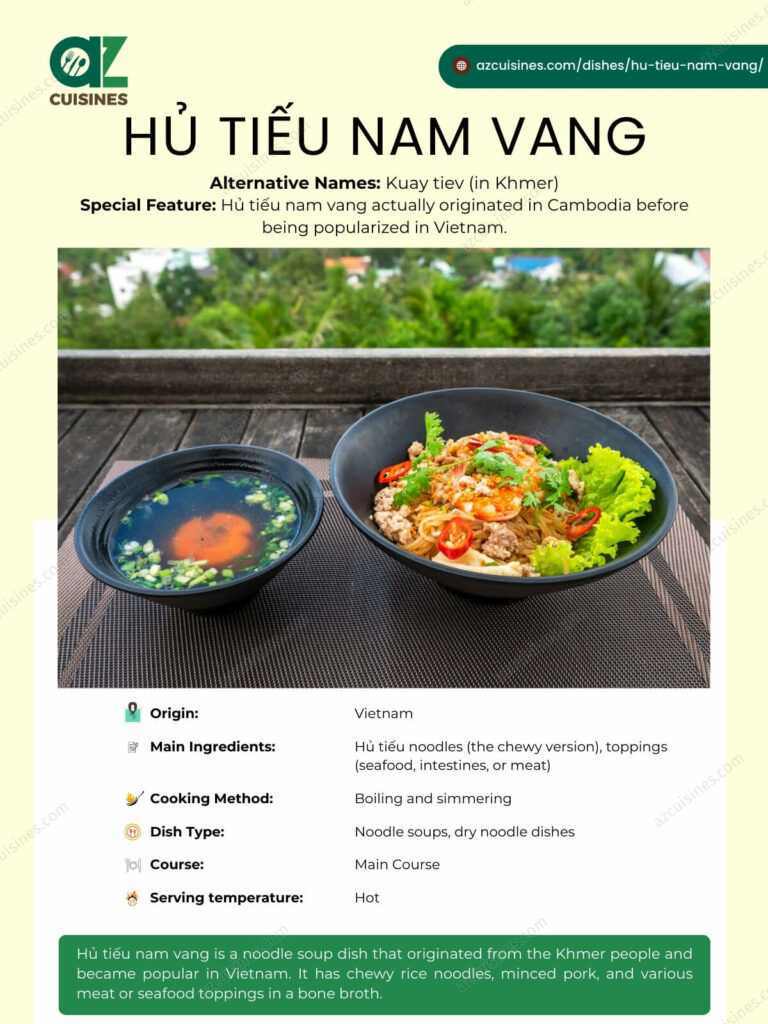
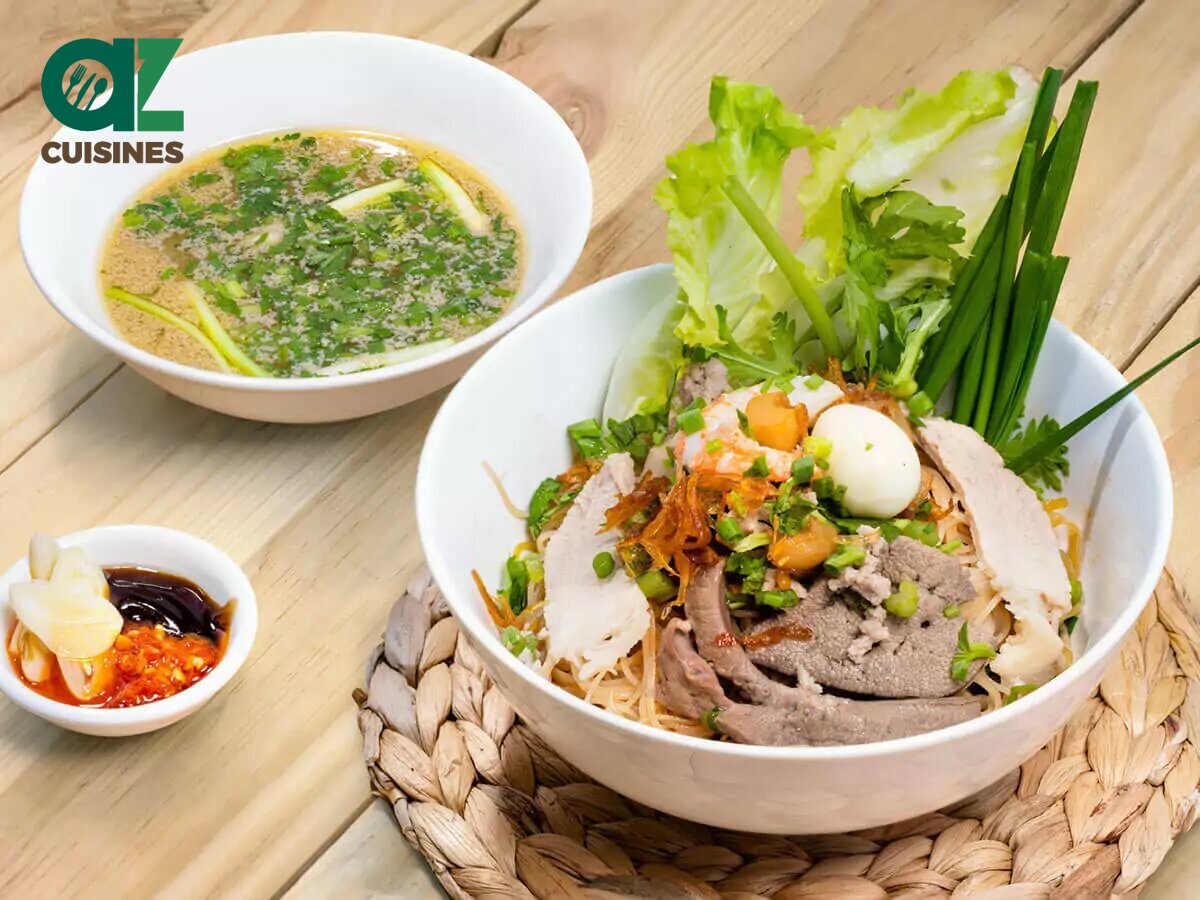
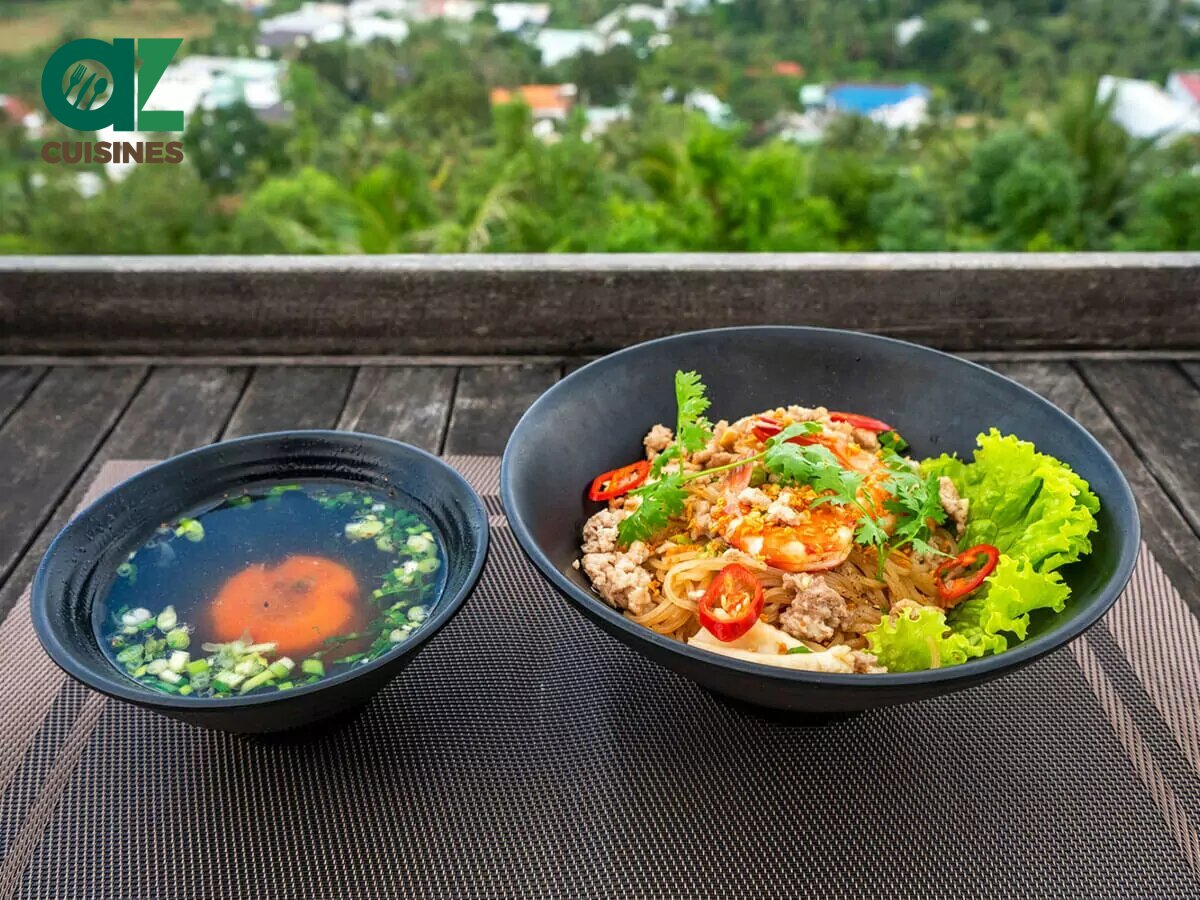

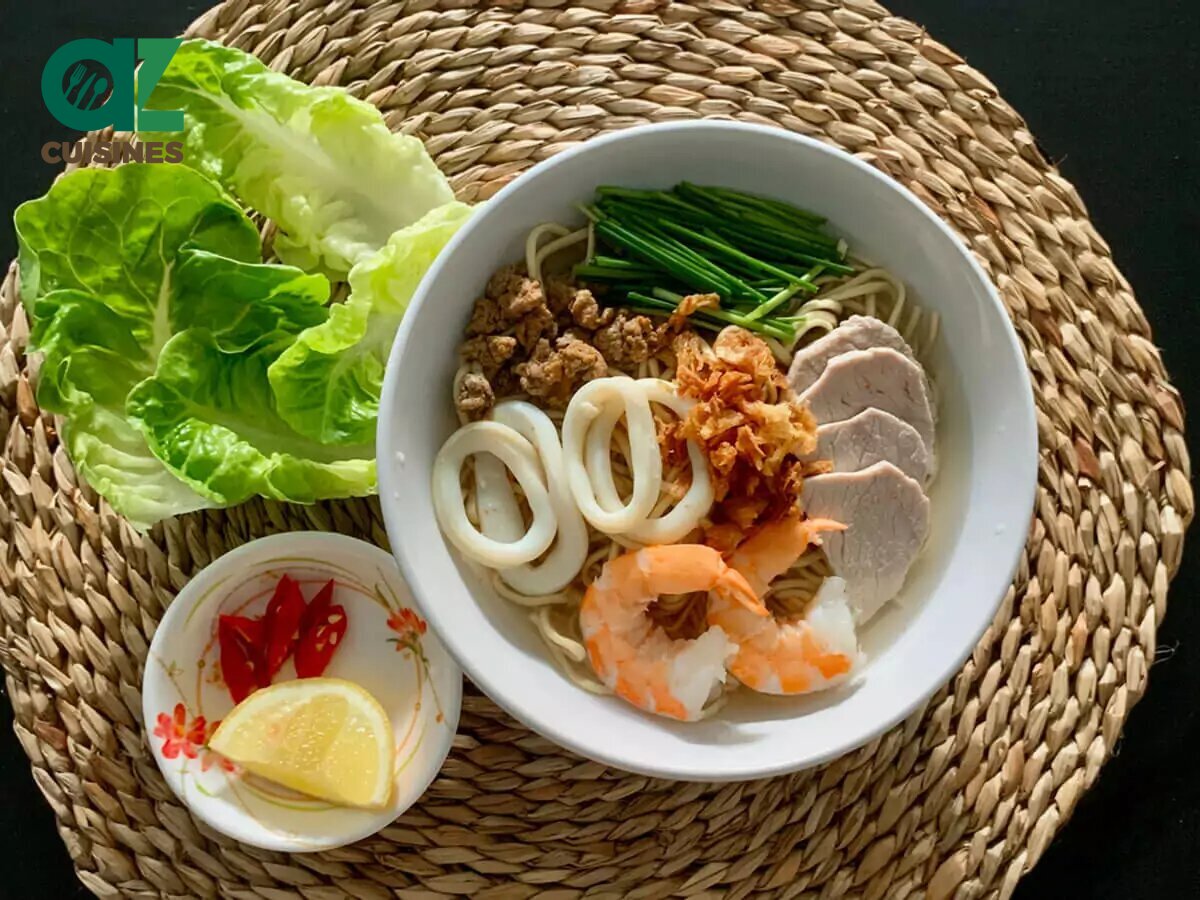
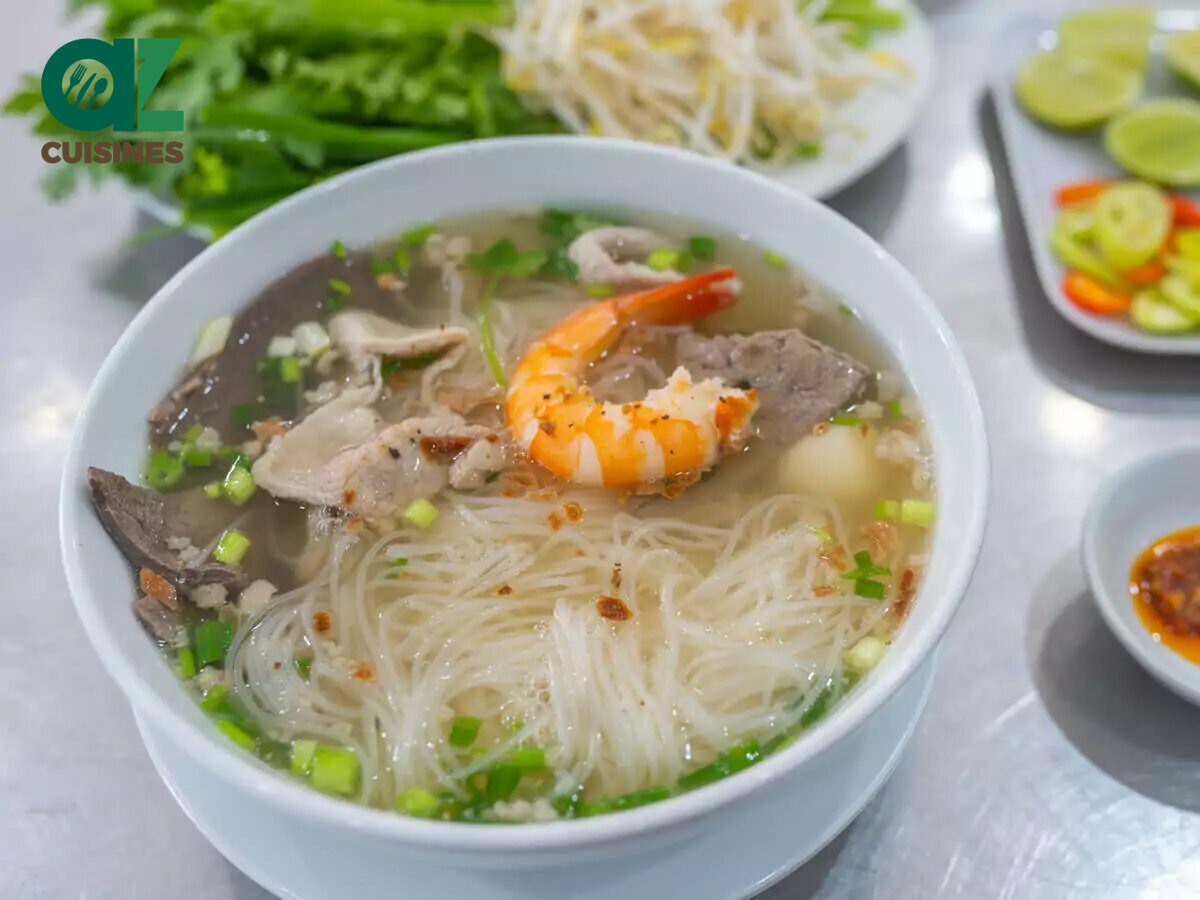
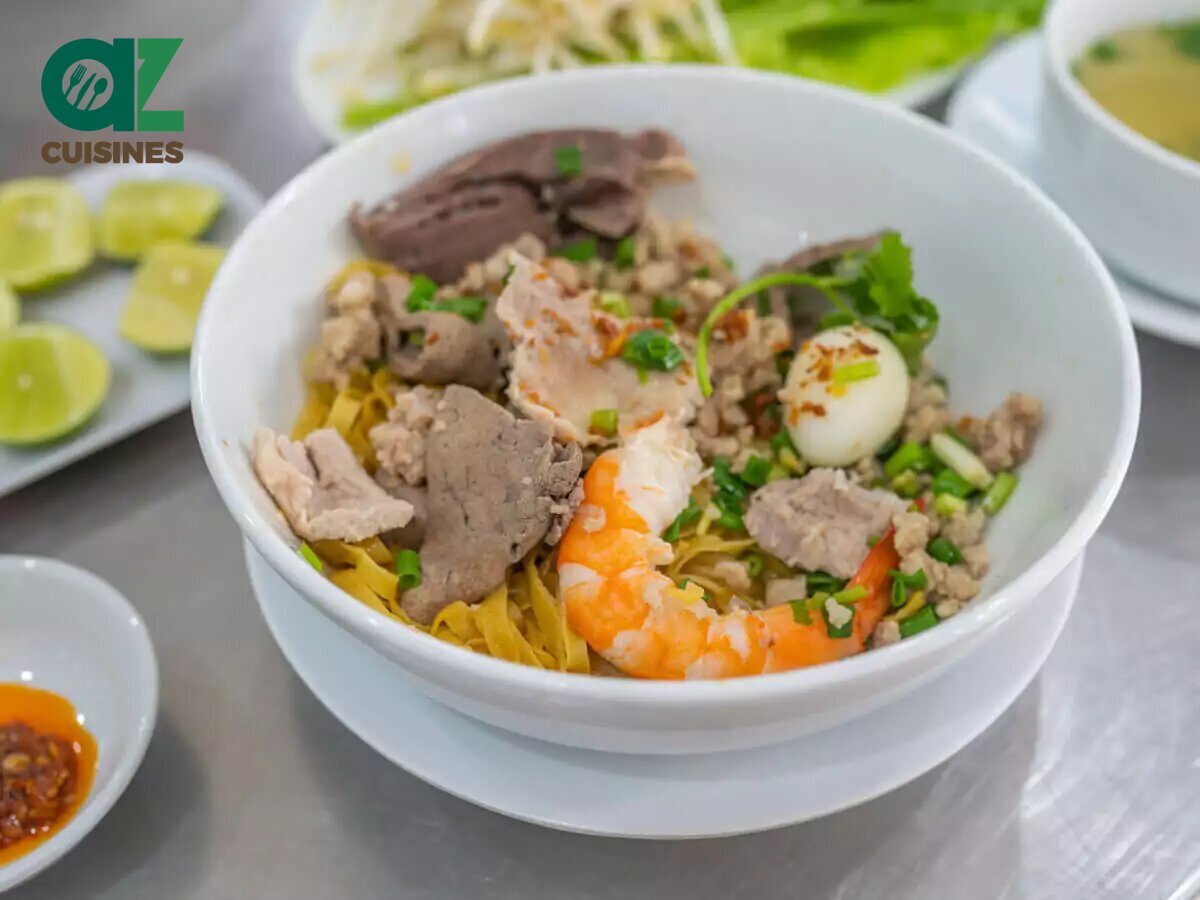
Truc Tran (Kris)
Senior Food Editor
Expertise
Home Cooking, Meal Planning, Recipe Development, Baking and Pastry, Food Editor, Cooking-video Maker, Vietnamese Food Evaluation Expert
Education
Truc Tran (Kris), an experienced food writer and editor, is great at exploring and describing global cuisines, from simple street food to fancy dining. In her writing, she skillfully mixes different flavors, cooking methods, and culinary traditions, showing the unique character of various cultures through their food and drinks. On azcuisines.com, Kris highlights her knowledge, especially in Asian cuisine and worldwide traditional dishes.